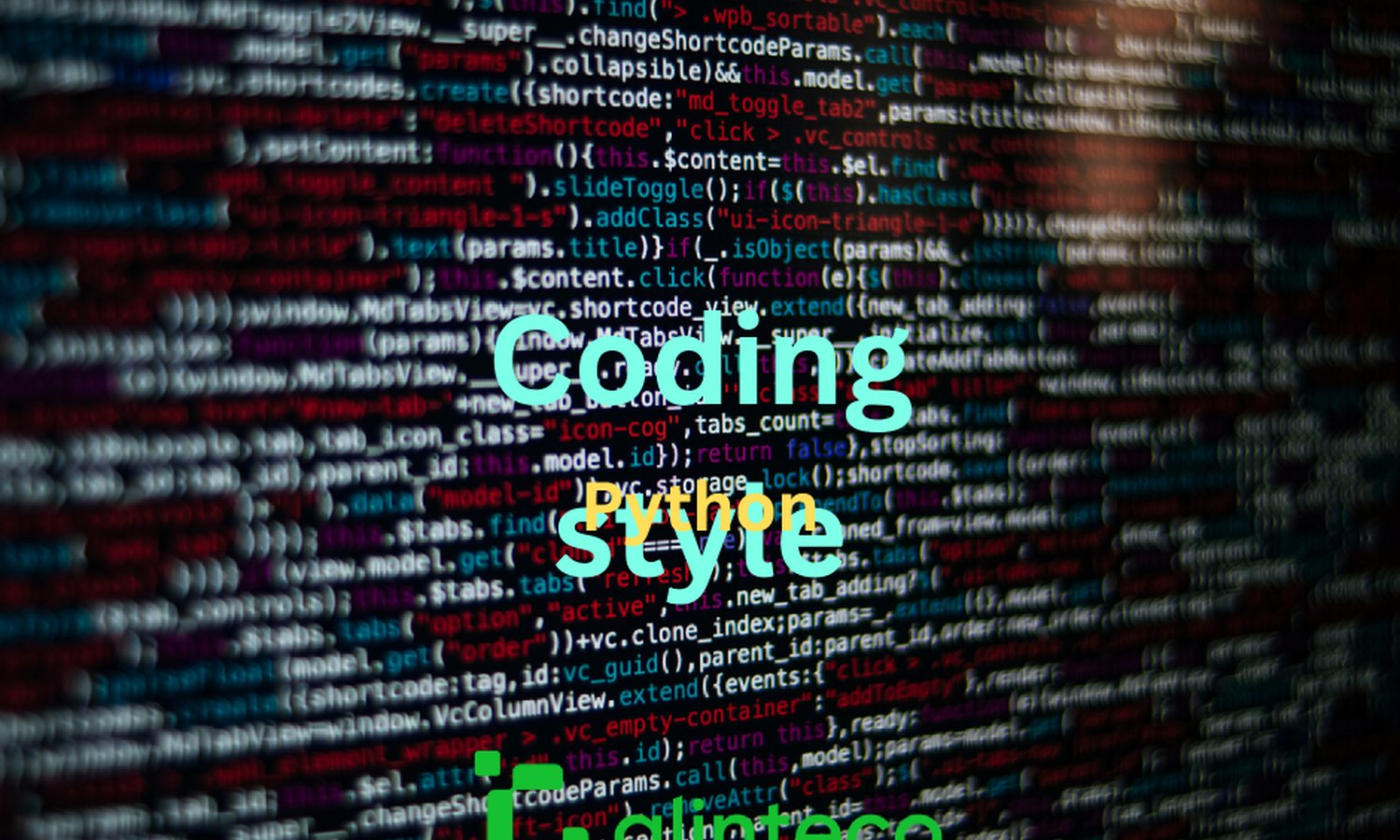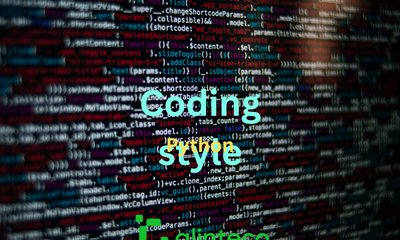Tôi nên tuân theo phong cách viết code Python nào?
By hientd, at: 08:44 Ngày 30 tháng 11 năm 2023
Thời gian đọc ước tính: __READING_TIME__ phút


Mở đầu
Python được nhiều lập trình viên yêu thích bởi tính dễ đọc và đơn giản. Tuy nhiên, việc tuân thủ một phong cách mã hóa nhất quán rất quan trọng để duy trì và cộng tác. Trong bài viết này, chúng ta sẽ khám phá các thực tiễn tốt nhất, công cụ và mẹo để đạt được một phong cách mã hóa Python hoàn hảo.
Chọn Phong Cách Mã Hóa Python Phù Hợp
Khi nói đến phong cách mã hóa Python, có một số tiêu chuẩn được áp dụng rộng rãi, chẳng hạn như PEP 8 và Google Style Guide. Sự lựa chọn phụ thuộc vào các yếu tố như yêu cầu của dự án, sở thích của nhóm và thực tiễn cộng đồng. Điều quan trọng là chọn một phong cách phù hợp với nhu cầu của dự án, đảm bảo tính đồng nhất và dễ đọc của mã. Tác động của phong cách mã hóa đối với việc bảo trì và cộng tác mã là không thể phủ nhận.
Các Gói để Kiểm tra và Sửa lỗi Mã
Để duy trì một phong cách mã hóa nhất quán, các lập trình viên thường dựa vào các công cụ để kiểm tra và làm sạch mã. Flake8, PyLint và MyPy là những lựa chọn phổ biến. Các công cụ này không chỉ xác định các lỗi cú pháp và vi phạm kiểu mà còn đưa ra các đề xuất để cải thiện. Hãy cùng tìm hiểu từng gói này, khám phá các tính năng của chúng và đưa ra các ví dụ thực tế để minh họa hiệu quả của chúng.
1. Flake8:
- Flake8 kết hợp sức mạnh của PyFlakes, pycodestyle và tập lệnh McCabe của Ned Batchelder.
- Ví dụ:
flake8 path/to/code/to/check.py
- Flake8 sẽ xác định các vấn đề như thiếu khoảng trắng sau dấu phẩy.
2. PyLint:
- PyLint không chỉ kiểm tra kiểu mà còn phân tích mã để tìm các lỗi tiềm ẩn và cung cấp các số liệu về chất lượng mã.
- Ví dụ:
pylint --recursive=y mydir mymodule mypackage
- PyLint sẽ báo cáo lỗi khi cố gắng nối chuỗi và số nguyên.
3. MyPy:
- MyPy tập trung vào việc kiểm tra kiểu tĩnh, đảm bảo các chú thích kiểu khớp với cách sử dụng thực tế.
- Ví dụ:
mypy program.py
- MyPy đảm bảo hàm tuân thủ các chú thích kiểu đã được chỉ định.
Cấu trúc lại Mã với các Gói Python
Cấu trúc lại là một khía cạnh quan trọng trong việc duy trì một cơ sở mã tốt. Các công cụ như Black và AutoPEP8 tự động hóa quá trình này, đảm bảo mã tuân thủ phong cách mã hóa đã chọn. Hãy cùng tìm hiểu những công cụ này và vai trò của chúng trong việc đạt được mã sạch và nhất quán.
1. Black:
- Black là một công cụ định dạng mã có quan điểm riêng, cung cấp một phong cách nghiêm ngặt và nhất quán.
- Ví dụ:
black {source_file_or_directory}
- Black tự động định dạng lại mã, tuân thủ phong cách được xác định trước.
2. AutoPEP8:
- AutoPEP8 tự động định dạng mã để tuân thủ hướng dẫn kiểu PEP 8.
- Ví dụ:
autopep8 --in-place --aggressive --aggressive
- AutoPEP8 sửa đổi mã để tuân theo các quy ước PEP 8.
3. Fourmat:
- Fourmat tự động định dạng mã để tuân thủ hướng dẫn kiểu PEP 8.
- Ví dụ: fourmat test.py
Mẹo và Thủ thuật cho Mã Python
Viết mã Python sạch và dễ đọc không chỉ đơn thuần là tuân theo hướng dẫn kiểu. Hãy xem xét các mẹo và thủ thuật sau đây để nâng cao kỹ thuật mã hóa của bạn:
- Sử dụng tên biến và hàm có ý nghĩa.
- Cung cấp bình luận rõ ràng để giải thích logic phức tạp.
- Phân chia các hàm lớn thành các hàm nhỏ hơn, mô đun hơn.
- Kiên định với thụt lề và khoảng trắng.
Vui lòng tham khảo triết lý "Clean Code" để biết thêm chi tiết
Thách thức trong Mã hóa Python
Mặc dù việc tuân thủ các phong cách mã hóa nhìn chung là đơn giản, nhưng các dự án lớn thường gặp phải những thách thức độc đáo. Việc duy trì tính nhất quán giữa các mô-đun khác nhau và xử lý các trường hợp ngoại lệ là rất quan trọng. Hãy cùng khám phá một số trường hợp có thể gây ra thách thức và đưa ra giải pháp.
1. Tính nhất quán trong các dự án lớn:
- Trong các dự án lớn với nhiều người đóng góp, việc đảm bảo tính nhất quán có thể khó khăn.
- Thiết lập các hướng dẫn mã hóa trong nhóm và sử dụng các công cụ để tự động hóa việc kiểm tra kiểu.
2. Xử lý việc tạo mã động:
- Mã được tạo động có thể gây ra thách thức trong việc duy trì một phong cách nhất quán.
- Đảm bảo quá trình tạo tuân thủ phong cách mã hóa đã chọn.
Ví dụ đoạn mã
Hãy cùng tìm hiểu các ví dụ thực tế về đoạn mã, áp dụng các phong cách mã hóa, công cụ và thực tiễn tốt nhất đã thảo luận.
1. Ví dụ 1 - Quy ước đặt tên:
# Đặt tên tốt
def calculate_total_price(item_price, quantity):
return item_price * quantity
# Đặt tên tệ
def foo(x, y):
return x * y
2. Ví dụ 2 - Bình luận rõ ràng:
# Bình luận rõ ràng giải thích mục đích
def calculate_area(radius):
# Công thức tính diện tích hình tròn
return 3.14 * radius * radius
# Thiếu bình luận
def area(r):
return 3.14 * r * r
3. Ví dụ 3 - Logic rõ ràng:
def find_odd(numbers_list):
odd = []
for index in range(len(numbers_list)):
if numbers_list[index] % 2 == 1:
odd.append(numbers_list[index])
return odd
# Logic tốt hơn, dễ đọc hơn, list comprehension
def find_odd(numbers_list):
return [number for number in numbers_list if number % 2 == 1]
Kết luận
Tóm lại, việc áp dụng một phong cách mã hóa Python nhất quán là tối quan trọng để đảm bảo tính dễ đọc, khả năng bảo trì và cộng tác của mã. Việc sử dụng các công cụ như Flake8, PyLint, Black và AutoPEP8, cùng với việc tuân thủ các thực tiễn tốt nhất, đảm bảo quá trình phát triển được hợp lý hóa. Hãy nhớ rằng, một cơ sở mã sạch và dễ đọc không chỉ là một sự xa xỉ mà là một điều cần thiết cho các dự án phần mềm thành công.
Thường thì các dự án gặp phải vấn đề về phong cách mã hóa không nhất quán, vì điều này có thể làm cho việc bảo trì và cộng tác mã trở nên khó khăn hơn. Việc áp dụng một phong cách mã hóa nhất quán, chẳng hạn như PEP 8 cho Python, là một bước tuyệt vời để cải thiện khả năng đọc và bảo trì của cơ sở mã. Dưới đây là một vài đề xuất để giải quyết vấn đề này:
-
Định nghĩa Hướng dẫn Phong cách Mã hóa: Xác định rõ ràng hướng dẫn phong cách mã hóa cho dự án của bạn. Nếu bạn đang làm việc với Python, việc sử dụng PEP 8 là một thực tiễn được chấp nhận rộng rãi. Đối với các ngôn ngữ khác, thường có các hướng dẫn kiểu dành riêng cho cộng đồng hoặc công ty.
-
Thực thi Tiêu chuẩn Mã hóa: Sử dụng các công cụ kiểm tra và phân tích mã tĩnh có thể tự động xác định và làm nổi bật các sai lệch so với hướng dẫn phong cách mã hóa. Điều này giúp phát hiện các vấn đề sớm trong quá trình phát triển.
-
Tự động Định dạng Mã: Cân nhắc việc sử dụng các công cụ như
autopep8cho Python hoặcprettiercho JavaScript để tự động định dạng mã theo hướng dẫn kiểu đã được xác định. Điều này có thể được tích hợp vào quy trình làm việc của bạn, đảm bảo rằng tất cả các đóng góp mã đều tuân thủ các tiêu chuẩn đã được thiết lập.
-
Kiểm tra Mã: Kết hợp kiểm tra phong cách mã vào quy trình kiểm tra mã của bạn. Hãy làm cho nó trở thành một phần của danh sách kiểm tra để đảm bảo rằng mọi đóng góp mã đều tuân thủ hướng dẫn phong cách mã hóa. Kiểm tra mã là một cơ hội tuyệt vời để cung cấp phản hồi về tính nhất quán của kiểu.
-
Đào tạo Nhóm: Tiến hành các buổi đào tạo hoặc hội thảo để làm quen các thành viên trong nhóm với phong cách mã hóa đã chọn. Điều này có thể giúp giải quyết bất kỳ sự nhầm lẫn hoặc câu hỏi nào về các quy ước kiểu cụ thể.
-
Quy ước Đặt tên nhất quán: Thiết lập và tuân thủ các quy ước đặt tên nhất quán cho biến, hàm và lớp. Đây là một khía cạnh thiết yếu của phong cách mã hóa góp phần đáng kể vào khả năng đọc của mã.
-
Tài liệu Hướng dẫn Kiểu: Đảm bảo rằng hướng dẫn phong cách mã hóa được lập tài liệu tốt và dễ truy cập. Tài liệu này nên được cập nhật thường xuyên khi dự án phát triển và các tiêu chuẩn mã hóa được tinh chỉnh.
-
Cải tiến liên tục: Định kỳ xem xét và tinh chỉnh hướng dẫn phong cách mã hóa của bạn dựa trên kinh nghiệm và phản hồi của nhóm. Công nghệ và các thực tiễn tốt nhất luôn phát triển, vì vậy điều cần thiết là phải điều chỉnh các tiêu chuẩn mã hóa của bạn cho phù hợp.
Bằng cách thực hiện các thực tiễn này, bạn có thể tạo ra một cơ sở mã chặt chẽ và dễ bảo trì hơn, dẫn đến một quá trình phát triển hiệu quả hơn và cải thiện sự cộng tác giữa các thành viên trong nhóm.
Câu hỏi thường gặp
Câu 1: Có bắt buộc phải tuân theo một phong cách mã hóa Python cụ thể không?
Đáp 1: Mặc dù không bắt buộc, nhưng việc tuân thủ một phong cách mã hóa nhất quán sẽ tăng cường khả năng cộng tác và bảo trì mã. Hãy chọn một phong cách phù hợp với dự án và nhóm của bạn.
Câu 2: Tôi nên chạy các công cụ xác thực mã thường xuyên như thế nào?
Đáp 2: Nên chạy các công cụ xác thực mã
Câu 3: Tôi có thể tùy chỉnh các quy tắc phong cách mã hóa theo yêu cầu của dự án không?
Đáp 3: Có, nhiều công cụ cung cấp các tùy chọn cấu hình, cho phép bạn tùy chỉnh các quy tắc phong cách mã hóa dựa trên nhu cầu cụ thể của dự án. Tính linh hoạt này đảm bảo rằng các hướng dẫn kiểu đã chọn phù hợp với sở thích của nhóm và yêu cầu của dự án.
Câu 4: Có bất kỳ tác động nào về hiệu năng khi sử dụng các công cụ định dạng mã như Black không?
Đáp 4: Mặc dù các công cụ định dạng mã thêm một chút chi phí, nhưng lợi ích của việc định dạng nhất quán và cải thiện khả năng đọc thường lớn hơn tác động nhỏ về hiệu năng. Trong hầu hết các trường hợp, tác động đến hiệu năng chạy là không đáng kể so với lợi thế của một cơ sở mã sạch và được chuẩn hóa.





